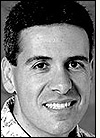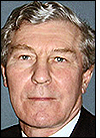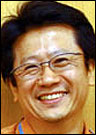Japan is ushering in a change to its ultrahigh-frequency (UHF) band for radio frequency identification, resulting in spectrum that closely matches that of North America and thereby narrows the overall frequency range used worldwide for UHF EPC Gen 2 passive tags and readers. The nation’s current 955 MHz band (952.2 to 957.4 MHz) will shift to a 920 MHz band (916.8 to 923.4 MHz), which is located in the middle of the 915 MHz band (902 to 928 MHz) used in United States. The new regulations, agreed upon in April of this year, are slated to go into effect on July 25, 2012.
The European Telecommunications Standards Institute (ETSI) EN 302 208 standard, employed in European countries, specifies the 866 MHz band (865.6 to 867.6 MHz) for passive UHF RFID tags, as do many Asian and Middle Eastern nations. In the United States, the Federal communications Commission (FCC) authorizes the 902 to 928 MHz UHF band for RFID, as do most other North and South American countries. Japan, on the other hand, has been utilizing 952.2 to 957.4 MHz, divided into various 200 kHz channels with a stringent spectrum mask (the amount that an RF signal can bleed outside of its assigned channel).
Consequently, to accommodate the variations in worldwide regulations, RFID hardware manufacturers have needed to offer either three separate RFID tag models, each designed specifically for one of the three different bands (866, 915 or 955 MHz), or a tag designed to operate across all three bands—that is, 865.6 to 957.4, a frequency range of nearly 100 MHz.
For those producing the tags, as well as consumers using them, a 100 MHz frequency range is “is non-ideal, because designing a single tag to operate over a 100 MHz frequency range is very difficult,” says Chris Diorio, the chairman and CTO of Impinj, which manufactures EPC Gen 2 UHF chips used worldwide. A tag that can operate over such a broad frequency band, he explains, is less sensitive than one designed to operate in only one of the three RFID UHF bands would be.
“In most cases,” Diorio states, “a tag antenna designer must sacrifice tag sensitivity to achieve this 100 MHz frequency range.” What’s more, he adds, because there can be a slight frequency range shift when a tag is placed on an object, tag antenna designers must design for an even wider range than 100 MHz. “All of us in the hardware community have hoped that a day will come when Europe, North America and Japan can all use the same frequency band. That day is one step closer to reality now that Japan is officially migrating their RFID frequency band down to 920 MHz.”
Europe’s telecommunication regulators are currently exploring the possibility of assigning the 915 to 921 MHz RF band for RFID applications, in order to meet the anticipated growth in UHF RFID usage on that continent (see European Agencies Consider the Expansion of Spectrum of UHF RFID). In May of this year, the European Union’s Frequency Management Working Group (WGFM) requested that the Spectrum Engineering Working Group (WGSE) undertake compatibility studies. At the same time, WGFM approved a roadmap outlining the steps required for the Electronic Communications Committee (ECC) to recommend the designation of additional spectrum at UHF for use both by RFID and other types of short-range devices. (The ECC is part of the European Conference of Postal and Telecommunications Administrations, a coordinating body for the telecommunications regulators of 48 European countries.)
“The roadmap states that, provided there are no unforeseen issues, WGFM will publish the regulation for the designation of the spectrum in 2014,” says John Falck, the chairman of ETSI’s Radio Spectrum Matters Task Group 34. In parallel with the work being undertaken by ECC, ETSI will draft a new version of its EN 302 208 standard, which will include specifications for the operation of RFID in the additional band of 915 to 921 MHz.
As recently as 2002, there was no passive UHF spectrum available for RFID in Japan. In 2003, the country’s Ministry of Public Management, Home Affairs, Posts and Telecommunications (now called the Ministry of Internal Affairs and Communications) studied the possibility of allocating 950 to 956 MHz for use by RFID systems (see Japan Opens Up UHF for RFID Use). However the group found that neighboring systems prohibited the use of 950 to 952 MHz and 954 to 956 MHz. As a result, only 2 MHz of spectrum—specifically 952 to 954 MHz—was sanctioned for UHF RFID transmissions, according to Jin Mitsugi, an associate professor in the faculty of environment and information at Keio University, the associate director of the Auto-ID Lab.Japan and a member of the ministry’s UHF RFID regulation development working group.
“Since then,” Mitsugi says, “we’ve had four rounds of regulatory updates, which eventually allowed license-exempt, low-power RFID for 952 to 957.4 MHz, and active UHF RFID systems in 951 to 958 MHz.”
In 2009, the Japan Automatic Identification Systems Association (JAISA), an automatic-identification industry group, began working with members of the worldwide RFID industry that have been pushing for a new Japanese UHF band, in order to accomplish the change in frequency for UHF technology. Japan’s upcoming UHF RFID frequency change has also been advocated by logistics services providers, product manufacturers and systems integrators from around the globe. “That movement had a clear relationship with the strong industrial interests towards RFID,” Mitsugi notes, “particularly the EPCglobal system.”
In addition, Mitsugi says, the rapid penetration of broadband cellular communications systems over the past few years, such as 3G and LTE, has forced mobile carriers, as well as cell-phone and network-equipment manufacturers, to increase data speed and enlarge their coverage. This, he adds, has resulted in strong frequency demands in the 900 MHz band. In 2010 a Ministry of Internal Affairs and Communications working group recommended allocating a 30 MHz band—including the UHF spectrum currently used for RFID—for cellular transmission, which would necessitate a shift of the RFID frequency band from the 950 MHz band to the 920 MHz band.
The UHF RFID working group was convened in April 2011, to study the technical feasibility of such a shift.
Japan’s RFID technology-provider community has been living with regulatory uncertainty for the past year, Diorio says, as the frequency discussions were ongoing. With the final decision in April, he speculates, the community may be reinvigorated with new projects and opportunities, including the tagging of laundry, apparel DVDs and other products. “The change to the Japanese frequency regulations allows inlay vendors to more easily build tags that can operate in Japan, North America and Europe,” he says. “With Japan moving their frequency band to overlap North America, tag performance in Japan will match North America. The result will be better-performing UHF Gen 2 RFID systems to address hot markets.”
The change may require some adjustment on the part of the Japanese RFID industry, however, as well as existing RFID technology users. RFID proponents did not entirely agree on the shift, Mitsugi says, as there are already commercial installations of UHF RFID tags and readers that use the 952.2 to 957.4 MHz band. “They also know that the announcement of such prospected regulation change discourages new adoptions until new regulations are in force,” he explains. RFID proponents also expressed concerns regarding the cost incurred by the shift. “We presumed, during the working group, that the cost of the shift would be covered by the party who obtains the frequency.” That is, Mitsugi indicates, the costs would be born by whichever cellular phone company wins the spectrum.
Now that UHF RFID is being moved to the 920 MHz band, Mitsugi says, “there will be a public bid for the 950 MHz band, meaning the prospective owner of the 950 MHz band is not decided, and there is a huge debate going on currently on the possible auctioning of the band for the first time in Japan.”
Currently, the total number of Japanese interrogator manufacturers are small. The shift to an internationally compatible band could decrease the number of Japanese reader manufacturers, since end users and systems integrators would be able to purchase foreign-made interrogators with less effort.
Mitsugi worries about the transition, however. “Even though the center frequency will be in line with U.S. and planned European UHF bands,” he states, “915 MHz, the detailed specifications, such as spurious mask and channel assignments, are different. This may be an obstacle to foreign manufactures to provide RFID systems to Japan, or may eventually leads to high RFID interrogator costs, hindering RFID adoption.
Impinj reports that when the new frequency regulation goes into effect in July 2012, it and other hardware providers will be ready with readers tuned to the new regulations, as well as tags with narrower bandwidth and greater sensitivity. According to Diorio, the spurious-emissions mask and channel assignments of the new regulations are no more problematic to implement—and, in some cases, are easier—than the prior Japanese regulations and the current ETSI regulations. “Impinj is quite excited about the change, and will support our partners as they transition to the new regulations,” Diorio says. The Japanese frequency changes will permit higher-performing tags for the entire market, he adds, and will provide a further incentive for Europe to migrate its frequency band.
Ultimately, Mitsugi says he is optimistic that Japanese end users of RFID technology will be happy with the change. “But I suppose there will be troubles during the transitions,” he notes, “such as lack of repair parts and supplies.”




